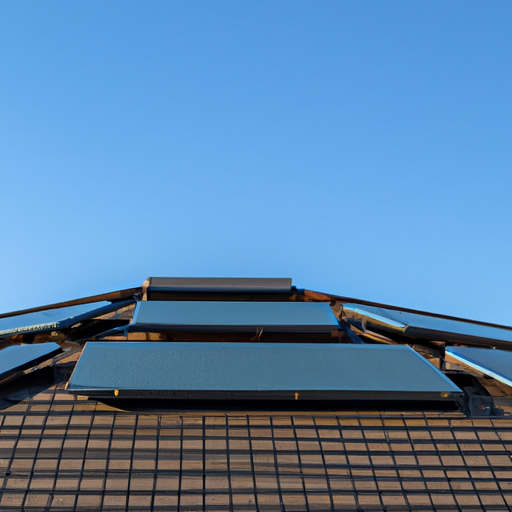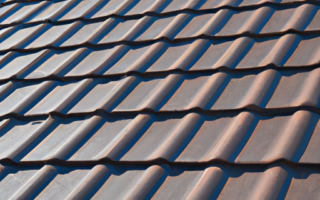Introduction to Roof Construction Techniques: A Comprehensive Guide
Introduction to Roof Construction Techniques: A Comprehensive Guide
Roof construction is a critical aspect of building design and plays a crucial role in providing protection and shelter from various weather conditions. The techniques and materials used in roof construction have evolved over the years, with an emphasis on durability, sustainability, and aesthetics. In this comprehensive guide, we will explore the different techniques and materials used in roof construction.
One of the most traditional and common techniques is the pitched roof construction. This involves creating a sloping roof with two or more surfaces. It not only adds visual appeal but also facilitates water drainage, preventing water accumulation and potential damage. Pitched roofs can be further categorized into gable roofs, hip roofs, and mansard roofs, each with its unique characteristics and advantages.
Another popular technique is the flat roof construction, which is commonly seen in commercial buildings and modern architectural designs. Flat roofs are typically built with a slight slope to aid water drainage. They offer a contemporary and minimalist look, making them suitable for various design styles. Various materials, such as reinforced concrete, asphalt, and PVC membranes, are commonly used in flat roof construction.
In recent years, green roof construction has gained popularity due to its numerous environmental benefits. Green roofs involve the use of vegetation layers on top of the building, providing insulation, reducing heat island effect, absorbing carbon dioxide, and improving air quality. The construction of green roofs requires specialized techniques and materials, including waterproofing membranes, drainage systems, and soil substrates.
Metal roof construction is another technique that has seen significant advancements. Metal roofs are known for their durability, longevity, and resistance to harsh weather conditions. They can be made from various metals like steel, aluminum, or copper, each offering its unique characteristics. Metal roof construction involves interlocking metal panels, which provide a sleek and modern aesthetic.
Apart from the construction techniques, the choice of materials is crucial in roof construction. Common materials include asphalt shingles, clay or concrete tiles, metal sheets, and slate. Each material has its strengths and weaknesses, including cost, aesthetics, longevity, and maintenance requirements. The selection of materials should consider factors such as climate, architectural style, and budget.
In conclusion, roof construction is a complex and multidimensional process that requires careful consideration of various techniques and materials. From traditional pitched and flat roofs to innovative green roofs and metal roofs, there are several options available, each with its unique advantages. When planning a roof construction project, it is essential to work with experienced professionals who can guide you in selecting the most suitable techniques and materials for your specific needs.
Keywords: roof construction, techniques, materials, pitched roof, flat roof, green roof, metal roof
Traditional vs Modern Roofing Materials: Pros and Cons
When it comes to roof construction, there are several techniques and materials that can be used. One aspect that should be taken into consideration is the choice between traditional and modern roofing materials. Each option has its own set of pros and cons, and the decision should be based on factors such as cost, durability, and aesthetics.
Traditional Roofing Materials
Traditional roofing materials have been used for centuries and are often chosen for their classic appearance and long-lasting performance. Some of the most common traditional roofing materials include:
- Clay Tiles: Clay tiles have been a popular choice for traditional roofs due to their durability and resistance to the elements. They are known for their distinctive red or orange color and can provide a charming touch to any property.
- Slate: Slate is a natural stone that offers a timeless and elegant look. It is highly durable and can withstand extreme weather conditions. However, it can be relatively expensive and heavy, requiring a strong supporting structure.
- Wood Shingles: Wood shingles provide a rustic and natural aesthetic. They are lightweight and eco-friendly. However, they require regular maintenance and are more susceptible to fire and rot compared to other materials.
While traditional materials offer a classic and timeless appeal, they can also come with some drawbacks. They are often more expensive to install and require regular maintenance to ensure their longevity. Additionally, some traditional materials may not be as energy-efficient as modern alternatives.
Modern Roofing Materials
Modern roofing materials have gained popularity in recent years due to advancements in technology and innovative designs. These materials often offer improved durability, energy efficiency, and ease of installation. Some of the popular modern roofing materials include:
- Asphalt Shingles: Asphalt shingles are one of the most commonly used roofing materials today. They are cost-effective, easy to install, and come in a variety of colors and styles. However, they have a shorter lifespan compared to other materials and may not have the same aesthetic appeal as traditional options.
- Metal Roofing: Metal roofing is durable, lightweight, and fire-resistant. It can be made from various metals such as aluminum, copper, or steel. Metal roofs offer excellent longevity and require minimal maintenance. They are also highly energy-efficient and can reduce energy costs in the long run.
- Synthetic Roofing Materials: Synthetic materials such as rubber, PVC, or plastic polymers have gained popularity due to their durability and affordability. They can mimic the appearance of traditional materials while providing improved performance and longevity.
Modern roofing materials often offer more flexibility in terms of design and can be more cost-effective compared to traditional options. They are also designed to meet modern building codes and regulations. However, it’s important to choose high-quality materials from reputable manufacturers to ensure their longevity and performance.
In conclusion, when deciding between traditional and modern roofing materials, it’s crucial to consider various factors such as cost, durability, aesthetics, and energy efficiency. Both options have their own advantages and disadvantages, and the final decision should be based on the specific needs and preferences of the homeowner.
Exploring Sustainable Roofing Solutions for Eco-friendly Construction
Exploring Sustainable Roofing Solutions for Eco-friendly Construction
When it comes to roof construction, it is important to consider sustainable solutions that minimize the negative impact on the environment. With the increasing focus on eco-friendly construction, builders and homeowners are now exploring various techniques and materials that promote sustainability in roofing.
One of the most popular sustainable roofing solutions is the installation of solar panels. Solar energy is a renewable and clean source of power that can be harnessed through photovoltaic panels integrated into the roof. These panels convert sunlight into electricity, which can be used to power the building or even sold back to the grid. Solar roofing not only reduces dependency on fossil fuels but also helps in reducing electricity bills and carbon emissions.
Green roofs are another innovative solution gaining popularity in sustainable construction. A green roof is a layer of vegetation installed on top of a waterproofing system. It provides numerous benefits, both for the environment and the building itself. Green roofs can absorb rainwater, reducing stormwater runoff and alleviating pressure on drainage systems. They also improve air quality by filtering pollutants and producing oxygen. Additionally, green roofs provide insulation, reducing the energy consumption required for heating and cooling the building.
Recycled and eco-friendly roofing materials are also gaining traction in the construction industry. Instead of traditional asphalt or concrete shingles, homeowners and builders can opt for materials made from recycled materials such as rubber, plastic, or metal. These materials not only reduce landfill waste but also have a longer lifespan, requiring fewer replacements over time. Additionally, some roofing materials are designed to reflect sunlight, reducing the heat island effect and contributing to energy efficiency.
Furthermore, proper insulation plays a crucial role in sustainable roof construction. Adequate insulation helps regulate indoor temperatures, thus reducing the need for excessive heating or cooling. This, in turn, leads to energy savings and a lower carbon footprint. Additionally, insulation also helps prevent heat loss, improving the overall energy efficiency of the building.
In conclusion, exploring sustainable roofing solutions is a crucial step towards environmentally friendly construction practices. Incorporating solar panels, green roofs, recycled materials, and proper insulation not only reduces the negative impact on the environment but also offers economic benefits in the form of energy savings. By embracing these eco-friendly solutions, builders and homeowners can contribute towards a greener future and create sustainable structures that stand the test of time.
Innovations in Roof Construction: Cutting-edge Techniques and Materials
Roof construction has undergone significant advancements in recent years, with cutting-edge techniques and materials revolutionizing the industry. These innovations are aimed at enhancing the durability, energy efficiency, and aesthetic appeal of roofs. In this article, we will explore some of the latest trends in roof construction and the techniques and materials that are driving these innovations.
One of the key advancements in roof construction is the use of green roofs. Green roofs involve planting vegetation on the roof, which not only adds an attractive visual element to the building but also provides numerous environmental benefits. The vegetation helps with rainwater management by absorbing and slowing down the runoff, reducing the strain on stormwater infrastructure. Additionally, green roofs can improve insulation, reduce energy consumption, and mitigate the urban heat island effect. This technique requires specialized materials such as waterproof membranes, drainage systems, and lightweight growing media.
Another cutting-edge technique gaining popularity is the incorporation of solar panels into roof design. Solar roofs harness the power of the sun to generate electricity, reducing dependence on traditional energy sources and lowering utility bills. The integration of solar panels with roofing materials has become more seamless, with manufacturers developing solar tiles that blend seamlessly with traditional roofing materials. These innovative solar roofing solutions are not only functional but also aesthetically pleasing, providing a sleek and modern look to buildings.
Advancements in materials have also played a significant role in transforming roof construction. One such material is cool roofing. Cool roofing materials are designed to reflect more sunlight and absorb less heat than traditional roofing materials. This leads to decreased heat transfer to the building, resulting in lower energy consumption for cooling. Cool roofs can be made from various materials such as reflective tiles, shingles, or coatings, all of which have high solar reflectance and thermal emittance properties.
In addition to cool roofing materials, there has been a rise in the use of sustainable materials in roof construction. Products such as recycled shingles, metal roofs made from recycled materials, and sustainable wood shakes are gaining popularity due to their eco-friendly characteristics. These materials not only contribute to waste reduction but also offer durability and energy efficiency, making them a viable choice for environmentally-conscious homeowners.
Furthermore, advancements in roofing technology have improved the installation process and overall performance of roofs. Innovations such as self-adhering membranes, which eliminate the need for hot asphalt or open flames during installation, have simplified the roofing process and enhanced safety. Additionally, the use of prefabricated roofing systems allows for faster installation and higher quality control, ensuring that roofs are constructed efficiently and effectively.
In conclusion, the field of roof construction has seen remarkable innovations in recent years. From green roofs and solar panels to cool roofing materials and sustainable options, the industry is constantly evolving to meet the demands of durability, energy efficiency, and environmental consciousness. These cutting-edge techniques and materials are transforming the way roofs are designed, constructed, and maintained, paving the way for a more sustainable future.



